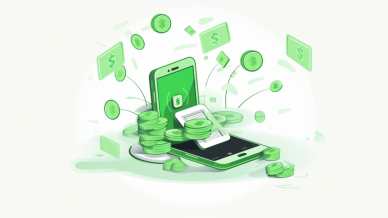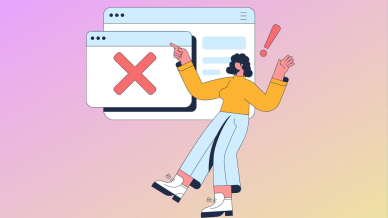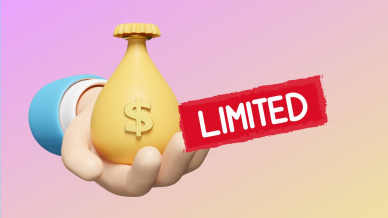PayPal's Personal Transfer Limitations: Your Ultimate Guide to Transferring Funds

PayPal has become a go-to payment method for numerous individuals and business owners worldwide. This is not at all surprising, as the service is convenient, offers global reach, and works well for the majority of transactions. But what about the PayPal personal transfer limit? Those who don’t use the digital payment platform may not realize that there are certain limitations on how much money you can send. In this article, you can learn more about such transfer limits and what you can do to lift them.
Understanding PayPal Personal Transfer Limits
PayPal doesn’t just have one transfer limit for all accounts. The payment system has limits that differ based on where a user lives, their account history, whether they have been verified, and other factors.
Similar to regular banks or other digital wallets, the PayPal limit for personal transfers exists to protect users. The main reasons for having such limits in place include:
Prevent fraud
While users may find transfer limits annoying, they play an important role in protecting accounts from fraudulent activity. If your PayPal account is hacked, withdrawing a sum exceeding the established limit will be impossible.
Avoid mistakes

It’s quite easy to make a mistake when making transactions, especially in a hurry. A transfer limit prevents you from accidentally sending a huge amount of money to someone at once.
Minimize potential disputes
Another reason for having a PayPal limit on sending money is to minimize the number of possible chargebacks or disputes over transactions. The company can easier and quicker deal with problematic transactions and ensure the recovery of funds when there is a limit.
Adhere to anti-money laundering regulations
As PayPal is a well-regulated platform that works in different countries, it should adhere to numerous requirements. PayPal constantly monitors transactions to react if they look suspicious. Transfer limits allow the company to monitor any unusual or fraudulent activity in accounts effectively.
Sending Funds Using PayPal: What Are The Limits?
The first thing to note about PayPal limits is that they vary depending on a particular situation, currency, and user’s location. Some countries have stricter regulations than others regarding maximum transfer sums.

Generally, a user that has a verified account can send up to $60,000 in a single transaction. However, PayPal notes that this amount can be limited to $10,000. However, PayPal doesn’t have limits on the total amount that can be sent by users with verified accounts.
You can view any transfer limits that apply to your account by following these steps:
- In your PayPal account, open Settings on the top right.
- Tap Accounts and Settings.
- Tap View limits shown under Account Information.
- Here you will see all the receiving and sending limits of your account.
If you need to make a transaction but don’t want to create a PayPal account, you can still make a one-time payment, which will be limited to $4,000. Once you've created an account and familiarize yourself with the transfer limits, you can send your money to the recipient. To do so:
1) Open your PayPal account.
2) Go to the Send & Request section. Enter the receiver's info (Email or phone number), specify the amount you want to send, and click Send.
3) If the transaction was successful, PayPal will send you the confirmation on your Email and/or phone number linked to your account.
Receiving Funds: Do The Same Limits Apply?
Another topic that concerns those who want to start using this payment platform is, “What is the limit for money to receive from PayPal?” If you have certain limits in your account, they are the same whether you want to receive or send money.
Those who have business accounts can receive a maximum of $250,000 a week or $60,000 per transaction. Users with personal PayPal accounts can receive a maximum of $10,000 in one transaction and cannot exceed $60,000 weekly.
If you haven’t yet verified your account, the best way to get a higher PayPal limit to receive money is to do this as soon as possible.
Increasing Your PayPal Limits
If you have decided to increase your transfer limit, PayPal allows you to do this by verifying your account. To link your bank account to PayPal:
- You need to confirm your phone number or Email address in the Summary section of your PayPal profile.
- Then, choose Wallet and tap Link a Bank.
- The next step is to provide your bank account details.
- For PayPal to check the entered data, you have to make two deposits to your bank account.
- In a few days, you should get a verification email from PayPal.
- Once you get an email, you need to enter transaction details into the PayPal system.
Once this process is complete, your account will receive verified status, and you will be able to enjoy a higher PayPal sending limit per day.
Tips for Managing PayPal Personal Transfer Limits
Do you wonder where to begin managing your PayPal transfer limits? Here’s what you should know before you start.
Find out limits related to your country or currency
The first important tip is to find out the exact limitations that apply in your country and to the currency you send or receive. You can see limits when sending funds from your account, or contact the PayPal support team to get more in-depth information.
Be aware of instant transfer limits
Those interested in quicker transactions should look into instant transfers from PayPal. When you use this service, you can send money to PayPal or receive funds to your bank account in just 30 minutes. One thing to note about this service is that you cannot lift the sending limit. The current limit set by PayPal is $25,000 per transaction if you have a linked bank account. The limit for debit card payments is $5,000.
Conclusion
PayPal uses several transfer limits for user protection and proper monitoring of any activity in accounts to prevent fraud and money laundering schemes. If you have a business, you should certainly know about any transfer limits you may have. The best way to increase such limits is to verify your account.
FAQ
When does my PayPal weekly transfer limit reset?
The transfer limit is reset automatically and is different for everyone. The reason is that it depends on the day of your last PayPal transaction.
PayPal limit: how much money can I transfer out of my account?
It depends on whether you have completed the PayPal verification process. It's $4,000 for unverified accounts and $10,000-60,000 if you link your banking card. Also, some other limits may apply according to the country you live in.
How can I check the transfer limit of PayPal?
To check your PayPal daily sending limit, log into your PayPal account, open Settings, and choose View Limits. All the information on transfer limits related to your account will be there.
What is PayPal’s transfer limit for my bank’s personal account?
If you have your bank account linked to your PayPal account, then you will have a transfer limit of $25,000 per day and $10,000 per single transaction.
What is the best way to increase my PayPal credit limit?
First, your account should be older than 6 months to be eligible for an increased credit limit. If so, you can send a request to PayPal online, but an even better and quicker way to increase your credit limit is to contact customer support.
